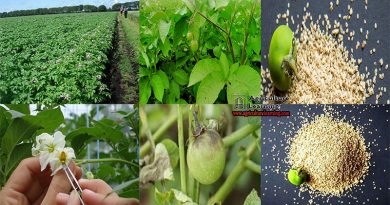Growing Technique Summer Squash in Home Gardens
The name “Summer Squash” refers to the short storage life of these squashes. Summer squash, including zucchini, crookneck, straightneck squash, patty pan and other similar types are common in Minnesota vegetable gardens. The fruit of summer squash plants are usually green, yellow or both and come in a number of shapes depending on the variety. Read on this article for growing summer squash in your garden.
Growing Process
Summer squash may be direct-sown, but you can give plants a leg up by starting the seeds indoors. Refrain from planting outdoors until the soil temperature has risen to 70°F. In most of Minnesota, this will be sometime in late May, or early June in the north. Some varieties of summer squash grow fruit over a longer season. For a longer, more even harvest, seed only part of your squash gardens at first, and then finish the planting three weeks later.
Water the seeds regularly. Apply black mulch after you prepare the soil in spring. Cut holes or slits in the mulch, and plant the seeds as above. After the seedlings have emerged, position the row covers over the plants, securing the edges with soil or staples. Spun row covers raise air temperature around the plants and protect them from cold nights. Row covers keep away both pests and beneficial insects required to pollinate the flowers.
Harvest and Storage
Pick summer squash when they reach the size you prefer, but before they are over-large, with large seeds, hard skins and fibrous or watery flesh. Squash blossoms are also edible, and you should harvest them the day they open. You can pick male flowers without hurting the yield of squash fruits.
You can keep summer squash in the refrigerator for up to four days. The longer you store summer squash, the more likely the cold is to damage it. You can freeze, pickle and can summer squash using a pressure canner.
93 total views, 1 views today




